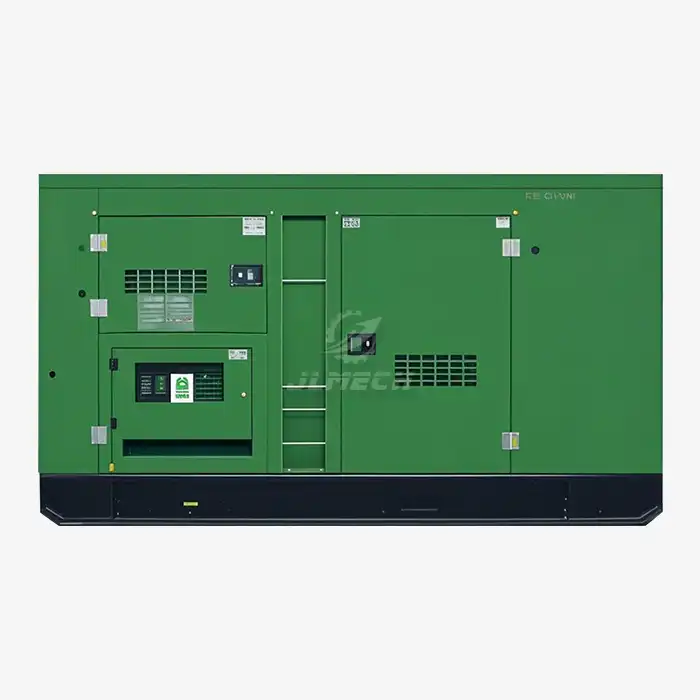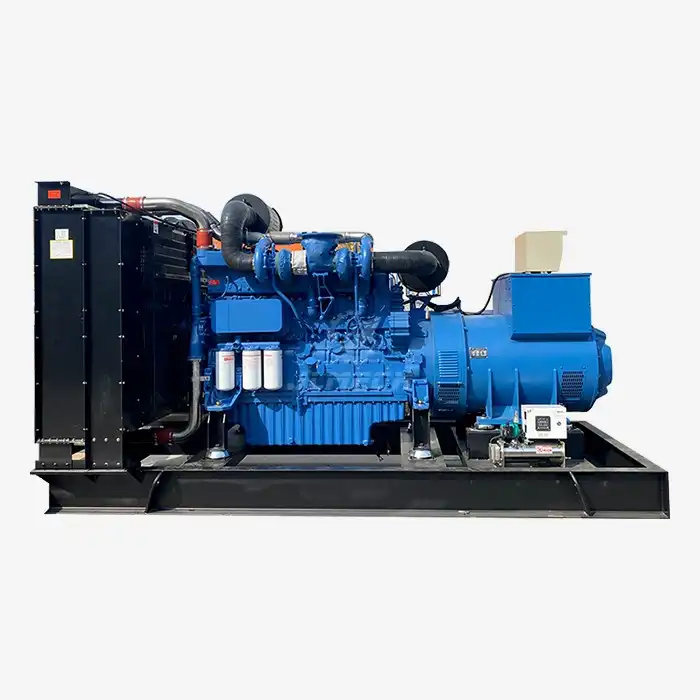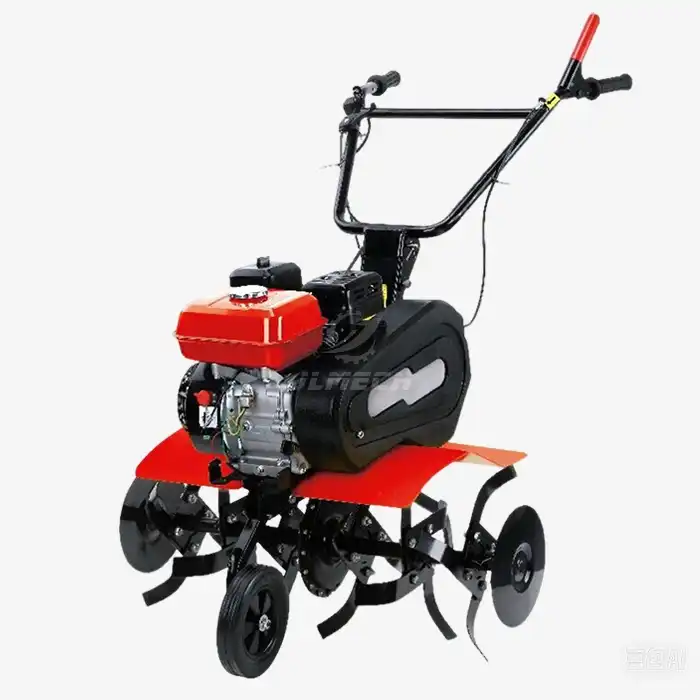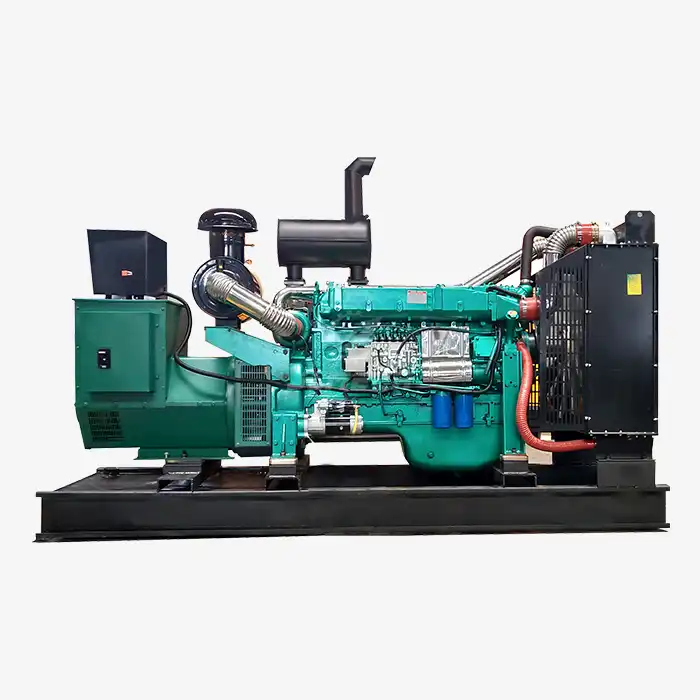What is the exhaust system of a generator?
The exhaust system is a critical component in any industrial generator setup, responsible for safely directing combustion gases away from the equipment and operating personnel. Properly designed industrial generator exhaust systems perform multiple essential functions including noise reduction, emission control, and heat management. Understanding the components and operation of these systems is crucial for ensuring safe generator operation, regulatory compliance, and optimal performance in various industrial applications.

Exhaust System Components
Industrial generator exhaust systems consist of several integrated components:
Exhaust Manifold:
- Collects exhaust gases from multiple engine cylinders
- Constructed from cast iron or heavy-duty steel alloys
- Designed to withstand extreme temperature fluctuations
- Incorporates heat shields for personnel protection
Flexible Connector:
- Absorbs engine vibration and thermal expansion
- Prevents stress fractures in exhaust piping
- Typically constructed from stainless steel bellows
- Critical for maintaining system integrity during operation
Silencer/Muffler:
- Reduces engine noise to acceptable levels
- Utilizes absorption and reflection technologies
- Available in various silencing classes
- Maintains minimal exhaust backpressure
Exhaust Piping:
- Corrosion-resistant materials (stainless steel or aluminized steel)
- Proper sizing to minimize backpressure
- Adequate support to prevent stress on engine components
- Thermal insulation for safety and efficiency
Emission Control Devices:
- Diesel particulate filters for soot reduction
- Selective catalytic reduction systems for NOx control
- Oxidation catalysts for carbon monoxide reduction
- Continuous emission monitoring systems
Primary Functions and Importance
Exhaust systems perform several vital functions in generator operations:
Gas Removal:
- Safely transports toxic combustion gases away from occupied areas
- Prevents carbon monoxide accumulation in enclosed spaces
- Maintains safe working environment for personnel
- Directs emissions away from air intake systems
Noise Attenuation:
- Reduces engine exhaust noise to compliant levels
- Meets occupational safety and environmental regulations
- Enables 24/7 operation in noise-sensitive areas
- Improves workplace communication and safety
Heat Management:
- Dissipates intense heat generated during combustion
- Protects adjacent equipment and structures
- Incorporates heat recovery options where applicable
- Maintains safe surface temperatures
Emission Control:
- Reduces harmful pollutants to compliant levels
- Incorporates after-treatment technologies
- Monitors emission performance continuously
- Adapts to changing regulatory requirements
Design Considerations and Specifications
Proper exhaust system design requires careful attention to multiple factors:
Backpressure Management:
- Maintains manufacturer-specified maximum backpressure
- Optimizes pipe diameter and routing for minimal resistance
- Consumes additional fuel and reduces efficiency
- Shortens engine component lifespan
Thermal Expansion Compensation:
- Accommodates thermal growth during operation
- Incorporates expansion joints and flexible sections
- Prevents stress-induced component failure
- Ensures long-term system integrity
Material Selection:
- Stainless steel for corrosive environments
- Carbon steel for standard applications
- Aluminized steel for cost-effective corrosion resistance
- Appropriate material thickness for durability
Installation Requirements:
- Adequate clearance from combustible materials
- Proper support spacing to prevent sagging
- Drain provisions for condensate management
- Accessibility for maintenance and inspection
Well-engineered industrial generator exhaust systems balance performance, safety, and regulatory requirements while ensuring reliable long-term operation.
Maintenance and Inspection Protocols
Regular maintenance ensures continued system performance and safety:
Routine Inspection Schedule:
- Weekly visual checks for leaks, damage, or corrosion
- Monthly verification of all hangers and supports
- Quarterly inspection of flexible connectors
- Annual comprehensive system evaluation
Critical Maintenance Tasks:
- Regular cleaning of spark arrestors
- Inspection and replacement of gaskets
- Verification of thermal insulation integrity
- Testing of emission control systems
Performance Monitoring:
- Regular backpressure measurements
- Emission testing and verification
- Noise level monitoring
- Thermal imaging for heat management assessment
Safety Considerations:
- Carbon monoxide monitoring in generator rooms
- Fire safety system integration
- Emergency shutdown procedures
- Personnel protection equipment requirements
Common Issues and Troubleshooting
Understanding potential problems helps prevent system failures:
Exhaust Leaks:
- Identified by soot deposits or audible hissing
- Caused by failed gaskets or cracked components
- Requires immediate attention due to safety implications
- Repaired by component replacement or resealing
Excessive Backpressure:
- Results in power loss and black smoke
- Caused by restrictions or undersized components
- Diagnosed with pressure measurement equipment
- Resolved by system modification or cleaning
Corrosion Damage:
- Accelerated by condensation and environmental factors
- Leads to component failure and leaks
- Prevented by proper material selection and maintenance
- Repaired by component replacement
Noise Complaints:
- Indicates muffler failure or system modification
- Verified with sound level measurements
- Resolved by silencer replacement or system upgrade
- Important for maintaining community relations
Regulatory Compliance and Standards
Industrial exhaust systems must meet various regulatory requirements:
Emission Standards:
- EPA Tier requirements for diesel generators
- European Union Stage V emission standards
- Local air quality management regulations
- Continuous compliance monitoring
Noise Regulations:
- OSHA workplace noise exposure limits
- Local community noise ordinances
- Equipment-specific noise certification
- Regular acoustic performance verification
Safety Standards:
- NFPA 37 for stationary combustion engines
- ASME codes for pressure-containing components
- Local fire code requirements
- Regular safety inspections and certifications
Properly designed industrial generator exhaust systems not only ensure regulatory compliance but also contribute to sustainable operations and community acceptance.
Conclusion
The exhaust system is an essential component of any industrial generator installation, performing critical functions in safety, environmental protection, and operational efficiency. Proper design, installation, and maintenance of industrial generator exhaust systems ensure reliable performance, regulatory compliance, and long-term cost effectiveness. Understanding these systems helps operators maintain optimal generator performance while ensuring a safe working environment.
References
National Fire Protection Association. (2023). NFPA 37: Standard for the Installation and Use of Stationary Combustion Engines and Gas Turbines. Quincy: NFPA.
Environmental Protection Agency. (2023). 40 CFR Part 60: Standards of Performance for Stationary Compression Ignition Internal Combustion Engines. Washington: EPA.
American Society of Mechanical Engineers. (2023). ASME B31.1: Power Piping Code. New York: ASME.
Johnson, M. (2022). Emergency Power Systems: A Comprehensive Guide to High-Speed Diesel Generators. Power Engineering Quarterly, 45(3), 78-92.











